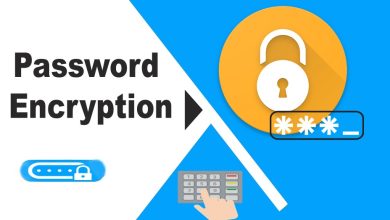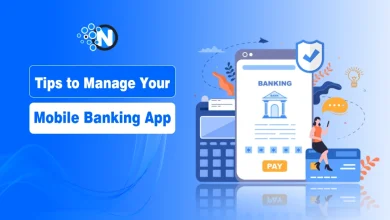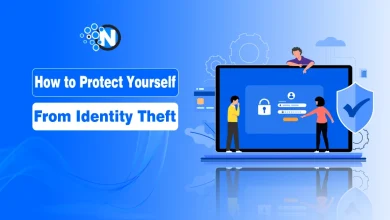How to Protect Your Digital Identity – A Complete Guide

In this digital world, most of our existence is wrapped up in the online world. Whether paying bills, buying groceries, connecting with friends and colleagues, or getting the news, we create an enormous number of records of everything we do. This information makes up our digital signatures, a distinct identity that can be used to identify or even forge identities for a wicked purpose. Maintaining this identity is essential to preserving privacy, financial assets, and, sometimes, your life.
According to ExpressVPN, Advanced AI creates highly realistic digital doubles, raising essential questions about identity security and personal privacy. This article will provide you with the necessary information and tips on how to protect your digital identity.
Understanding Your Digital Identity
To learn how to protect your digital identity, the first thing that you need to understand is what it contains:
- Personal Information: This entails the most basic facts that are customary for identification. Such as your name, address, phone number, and date of birth, not to mention your social security number or the equivalent in your country.
- Online Accounts: Any presence on the web, be it social networks, emails, forums, banking, or shopping accounts, leaves its footprint in your online persona.
- Public Records: Depending on the individual circumstance, these can include property deeds, voting records, and even court records. All these documents or files must be kept protected and private.
- Digital Activity: This includes your web history, searched terms, geographical coordinates, bought products, shared content, and any other actions you take in cyberspace.
How to Protect Your Digital Identity
Here are some way to know how to protect your digital identity:
Threats to Your Digital Identity
However, with this everlasting digital presence, we also come across various risks. For instance, a threat always looming is a data breach that occurs when organizations you interact with inadvertently disclose your details. Other threats include phishing, which refers to deceitful emails or messages that make the receiver disclose their secret information. Computer viruses, viruses that can enter your devices, hack into your accounts, or track your moves, plus ransomware risk is high.
Building Strong Foundations for Défense
Building solid foundations is essential for protecting your digital identity. This begins with passwords and extends to Multi-factor authentication (MFA). As for password complexity, it should be noted that passwords should contain capital and lowercase letters, numbers, and symbols and should not be shorter than 12 characters. Opt not to include personal details like birthdays, conventional dictionary terms, and common expressions.
Note that each account must have its own password, so don’t use the same one for multiple accounts. A password manager is helpful because it generates and saves secure, distinctive passwords for every practical action online. MFA makes your accounts more secure by making you input a second form of passcode, such as a code sent to your phone/MFA or fingerprint scanning on top of the password you usually use.
Secure Your Devices
You also need to consider the security of the devices that you are using. Ensure your devices, be these a computer, a laptop, a mobile phone, or a tablet, have a reliable antivirus and malicious software removal tool installed and active at all times. Software upgrades are on your side, as they usually contain updates to plugins or software flaws that the attackers are capitalizing on. Remember to install the update for the operating systems, browsers, and your applications without fail.
While it appears easy to access when using Public Wi-Fi networks, you are putting yourself at risk. Do not perform banking or anything that involves delicate accounts and payments on those networks. Do not underestimate physical security measures. Secure your devices with passwords or PINs, and ensure that your devices have a feature that turns the screen off in the pocket or a bag. This ensures that even if one loses their device or gets stolen, one cannot access the files since the code is unique.

Social Media Accounts
Social media platforms are a double-edged sword. While they offer connection and entertainment, they also collect vast data about you. Be social media savvy by reviewing and adjusting your privacy settings on all platforms—limit who can see your profile, posts, and information. Only connect with people you know and trust.
Before hitting “post,” take a moment to consider what you’re sharing online. Personal details like your home address, birthday, or travel plans can be used for social engineering attacks. Be wary of friend requests from unknown people and avoid online quizzes and surveys that might be designed to collect personal data for targeted advertising or even identity theft.
Be Cautious About Downloading and Clicking
When it comes to downloading and clicking, you must be careful always. Do not respond to messages, open links, or attachments from unknown senders since they will likely be phishing. Do not download any software from unreliable resources. Stay alert when downloading free software because it might contain a virus or malware. By following these other vast strategies, you can reduce risks and thus protect your valuable identity online.
Verdicts
Although the internet world is incredibly convenient and connective, several threats to your digital identity exist. You can protect your digital footprint by being aware of the dangers, implementing this guide’s suggestions, and watching your online behavior. Though maintaining your digital identity is a continuous task, you may navigate the online world with assurance and comfort if you put in regular effort and knowledge.




